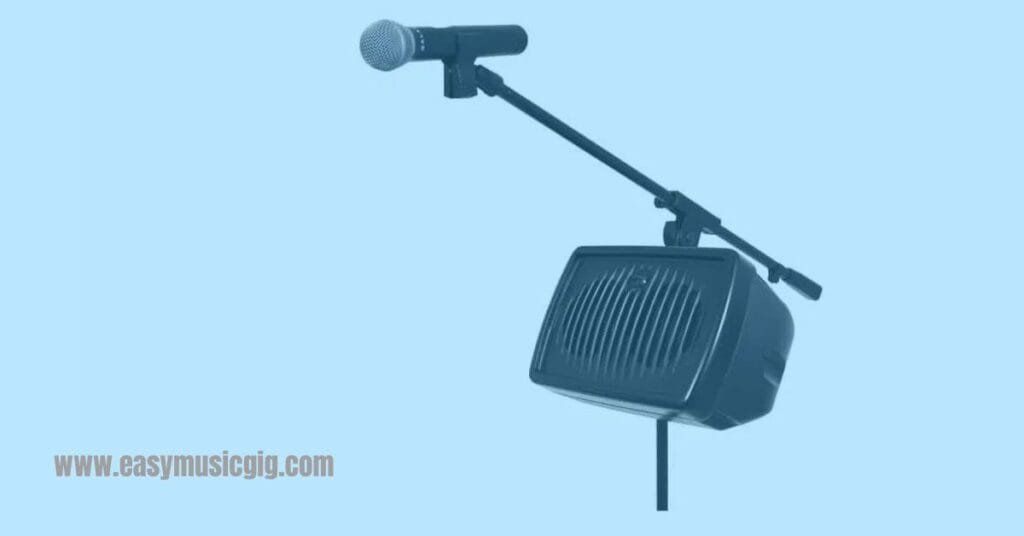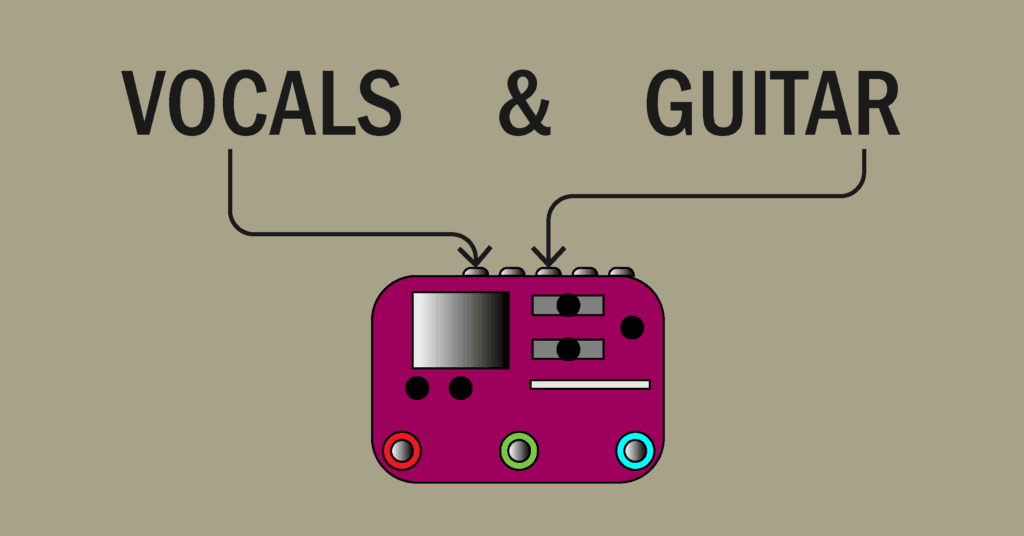One Control Blue 360 Amp-in-a-Box Review: Is the Acoustic 360 Back?
Solid state amps are not so praised as their valve brothers. At least for the electric guitar. However, bass players often adopted solid-state equipment. The Acoustic 360 is probably one of the most iconic solid-state bass amplifiers in history. One Control Blue 360 is the closest you can get with a bass pedal. It is important to understand the circumstances of guitar amp technology that was popular at the time this bass amp was born.
For bass players, guitar amps were becoming hard to compete with on stage as they became extremely loud. The Acoustic 360 was the solid-state response to that trend.
When you realize that it was used by Jaco Pastorius, John Paul Jones, and John McVie, you start thinking, how cool would it be to try one out, if you haven’t? Getting your hands on an original isn’t that easy, but thanks to One Control, you can have a very close-to-original experience with their Blue 360 AIAB pedal.
Out of the box impressions
For this review, I called my bass player for a little help. We tried out this beautiful pedal that is an amp-in-a-box concept. It comes with a well-protecting foam surrounding in a black box with the standard One Control dotted design.
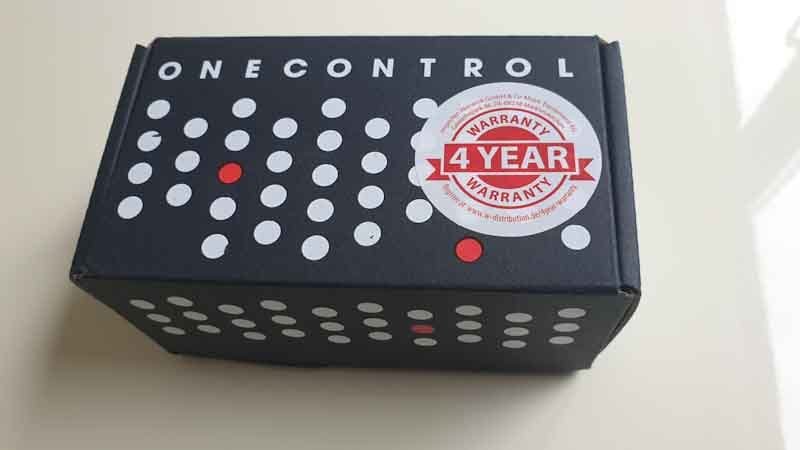
The pedal comes in a beautiful metallic light-blue reflecting finish that resembles the original Acoustic 360’s blue finish. The size is the mini-type size that is common with what Mooer has in its arsenal. But don’t let the small size fool you! We’ll get to that.
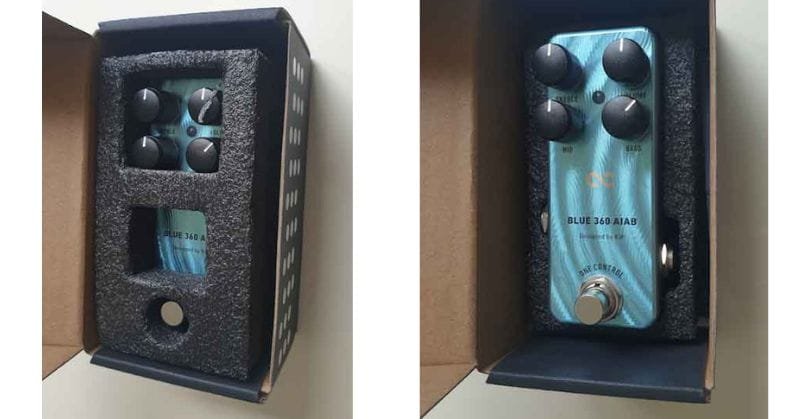
One Control 360 Blue – Controls
The One Control Blue 360 AIAB pedal comes with 4 knobs:
- Treble
- Mid
- Bass
- Volume
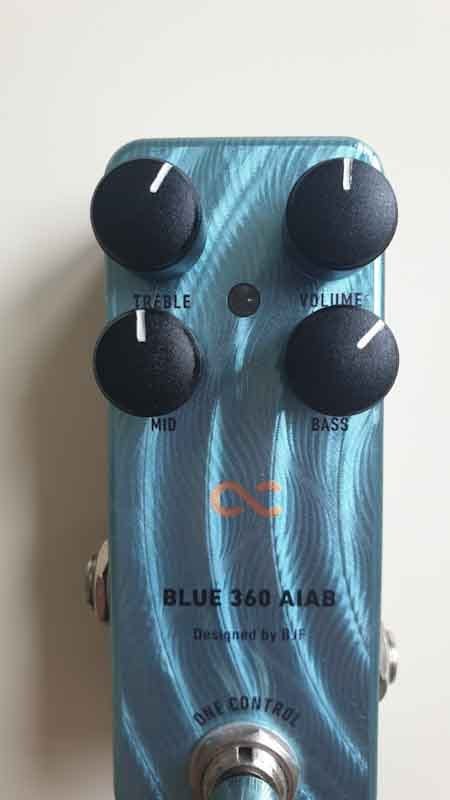
The first three do what they’re supposed to do, but in a non-expected way. It’s not that they don’t control the frequencies they represent; it’s more about the overall tone that’s altered with some experimentation and tweaking. This pedal can do so many different tones, pretty much everything from very clean to the beloved distorted sound of the original Acoustic 360.
The volume switch is a different beast. It controls the overall output volume, increasing distortion as it goes up. To keep things clean, you should leave the volume at no more than 9 o’clock. Anything higher will give distorted sounds, but not in the full spectrum. The middle area will give you a combination of both clean and distorted sounds, depending on the notes you are playing and, of course, the style of your playing. The volume control acts as a volume/boost knob as long as the pedal is in “0 dB mode”
There is a small switch on the left side of the pedal that turns the pedal into the “-18 dB mode”. The normal position is the “0 dB mode”, described above. When the -18 dB switch is on, the pedal acts as a distortion pedal. Pressing the main ON/OFF switch will not change the volume while in this mode, but will turn on or off the bass distortion pedal we now have.
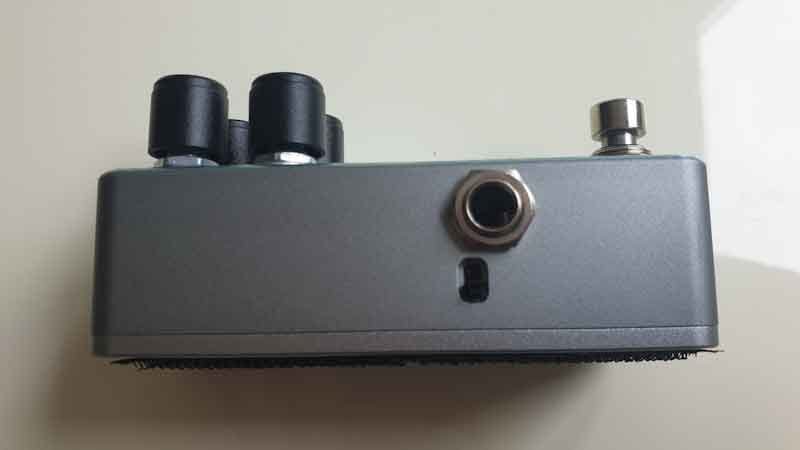
“Blue 360 delivers a bass tone that fits in perfectly with high-density, powerful band sounds – especially those with high volume, distorted guitar – making it a great option for classic rock, punk, etc.” (One Control)
What does the One Control 360 AIAB pedal sound like?
The reason for trying out this pedal is a practical one. We used to gig at a venue that had the original Acoustic 360 on stage. My bass player said that he remembered the tone being crystal clear and warm, a quality typically associated with valve amps. He said he never forgot the tone and couldn’t wait to try out the pedal. This is what he thinks about it:
“I really enjoy the One Control 360 AIAB pedal because I can get that sweet spot between clean and overdriven bass tone, which I couldn’t get with other pedals with similar features. I am a fan of a clean tone for bass guitar. I don’t use pedals that much. To get the desired tone, I use different finger positioning on the fretboard or a pick.
I always missed that “bite” that the One Control 30 gives me. It provides the character I like with a bass guitar. When switching the pedal off, my bass sounds sterile all of a sudden. The volume knob gives me the amount of distortion I need, you have to listen very carefully to get the right amount. I also tried the pedal with an electric guitar. The sound was a bit “digital”, but with the use of some plugins, I got interesting results.”
We now use the pedal when we play acoustic gigs together as a duo act, and we agreed that the pedal gave the bass guitar an impressive and convincing sound. For these gigs, we use the Fishman 220A SoloAmp, so no dedicated bass amp. The Fishman is made for acoustic when using the two front channels, which have integrated acoustic preamps.
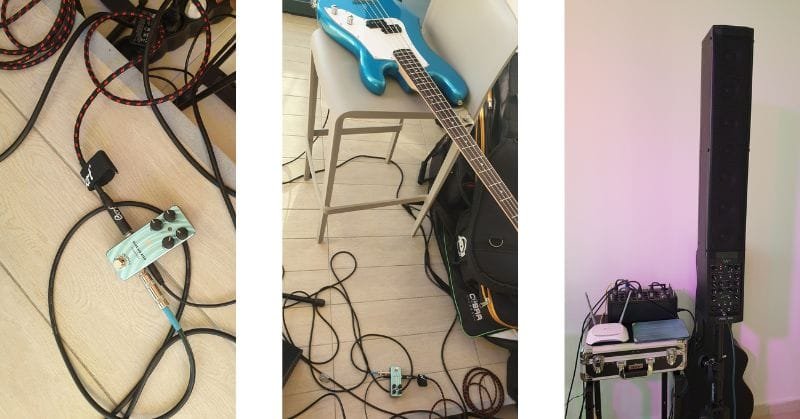
To bypass these preamps, we plug our vocals and bass guitar into a Behringer XR18R, which goes into the “monitor in” XLR input on the back of the Fishman. This gets you a decent bass tone for low-volume gigs, but the One Control 360 gives the bass a very natural sound that is very close to a sound coming from a bass amp.
Final thoughts
The One Control 30 AIAB bass pedal will not give you the exact sound of the original Acoustic, but it gets you very, very close to it. The small size is a win-win factor. If you are looking for this tone and play small gigs without an actual bass amp, you should absolutely try it. It needs a little tweaking to get what you may be looking for, but it’s absolutely worth it.

